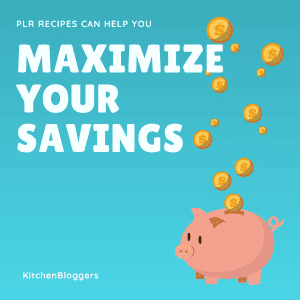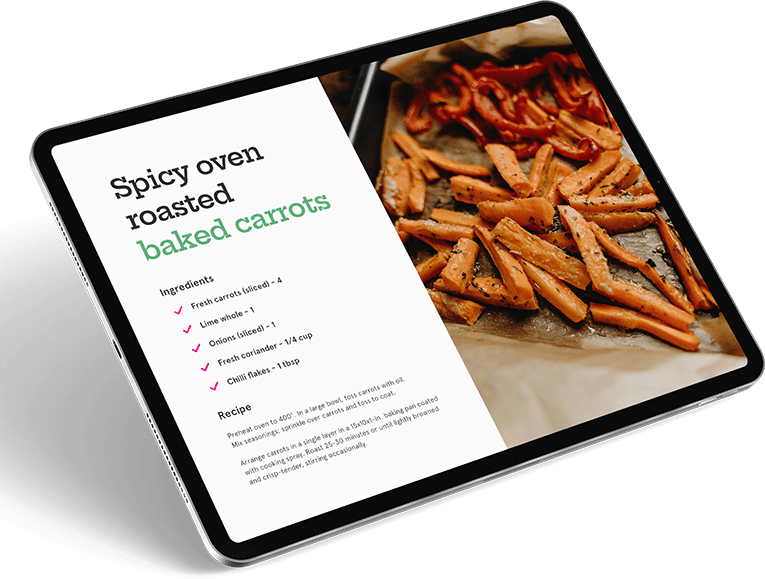Industry newbies underestimate how expensive food costs can be, which can be detrimental to profits. This scenario is not ideal if you want to earn additional income through your website.
Content creators should understand how valuable private label rights (PLR) recipes can be. For one, you can streamline your food blogging business by outsourcing such tasks instead of shooting countless dishes for social media pages, videos, e-books, and other channels.
This article will explain why PLR recipes can be the game-changer you need to take your blog from a hobby to a business. Read on to start monetizing your content the right way.
Table of Contents
ToggleExpenses That Come With Running a Blog
Running a successful food blog has many benefits, like being an additional income source. Once you start thinking of your blog as a business, you will realize how crucial it is to minimize costs to boost your profits.
Below are some of the expenses of running a food blog.
Website Hosting
First, I recommend investing in website hosting. While there are various free and cheap hosting options, reliable providers are necessary for those wanting to monetize their efforts.
For this reason, I suggest spending at least $45 monthly for dedicated hosting. Doing so is one of the most cost-effective ways to enhance your site’s security.
Domain Name
Branding is essential in running a successful food blog. To build your clientele, you should invest in a relevant domain name, which should be around $5 to $50. Locking in the right one for your blog will make it easier for current and future fans to find you.
Automatic Website Backups
A website backup ensures you can restore your site after crashes or other problems. For instance, if you unintentionally delete some site elements, you can easily return to a previous version. The alternative to this expense is having your cloud backup, which could become costly fast.
Secure Sockets Layer
Secure Sockets Layer or SSL is the industry standard for securing connections and protecting data between systems. It prevents cybercriminals from accessing and modifying any information, including personal details.
Search engines like Google want to ensure user safety at all costs, making SSL essential to ranking your blog. Without SSL, you risk not getting recommended by such platforms.
On average, an SSL certificate costs around $60 annually.
Content Creation
Other than keeping your website secure, it’s also important to capture and engage followers. To do this, you should create standout content that adds value for your audience. You’ll need the right equipment, tools, and food!
What Food Costs Are Associated With Blogging?
Naturally, food bloggers can expect substantial food bills. Below are some of the components these content creators spend on.
Eating Out
If you’re ready to take your website to the next level, I suggest occasionally mixing up your content types. Apart from unique ingredients, fun challenges, and relevant collaborations, you can add restaurant reviews.
However, as I learned the hard way, eating out almost daily just for content can take a serious toll on your budget. There are, after all, some overpriced menus in the market. Instead, one option is to publish more PLR recipes and limit restaurant reviews.
Tipping
Once your blog gains more loyal followers, it’s not uncommon for restaurants to invite you to try their food for free. However, even if you get complimentary meals, there will still always be a cost to eating out.
In my case, if anyone invites me to a sponsored event, I tip a little extra. After all, restaurants spend so much on their staff, overhead costs, and ingredients. It’s the least anyone can do for a non-existent bill.
Ingredients
I recommend updating your website and social media pages three to four times weekly to keep your audience interested. Without PLR recipes, this scenario means creating at least 12 unique dishes monthly. Doing this may be more affordable than eating out, but it can drain your budget quickly.
This process will also take much time and effort besides the food costs. For this reason, a viable option to maximize your savings is to use PLR recipes from reputable sources.
PLR Recipes for Food Bloggers
Private label rights are outsourced services that let users reap the benefits of content marketing without breaking the bank. The idea is to buy the rights to particular content types instead of spending thousands on appliances, tools, and food items you won’t use regularly.
As for PLR recipes, you can use them as-is or edit them to match your blog’s voice. Afterwards, you can market these materials as your own. After buying them, you can use them however you please.
If you’re looking for high-quality content, you can visit KitchenBloggers any time and buy as many blog materials as you need. There’s no limit to how many sets you can purchase.
Benefits of PLR Recipes
Are PLR recipes worth the investment?
Yes, they are!
I’ve listed some advantages of choosing the outsourcing path over creating all your content on your own.
Massive Savings
In most cases, PLR recipes shouldn’t cost more than a few dollars each. It’s a less expensive alternative to hiring someone full-time to develop such materials from scratch and buying all the ingredients per content type.
Customization
As a food blogger, I suggest finding a niche. This process could mean focusing on certain cuisine types like ethnic or lifestyle choices like vegetarianism.
With a reliable provider, you don’t have to spend on rare, expensive ingredients you might not use again. Instead, you can buy the rights to particular content types and add your blog name, details, and calls to action (CTAs).
Ownership
In a PLR setting, you can edit or sell your materials or even give them away for free. You will have the same rights as the creators, helping you cut unnecessary food costs. Occasionally, some PLRs will have stricter limits, so I suggest reading the fine print whenever you purchase such content types.
Verdict: Can PLR Recipes Help You Cut Food Costs?
So, can PLR recipes help you cut food costs? Yes, they can.
These content types offer other advantages, too, including unmatched time savings and additional expertise.
Can you imagine the work that goes into one recipe? You must draft, test, and modify it to achieve the best possible version. Afterwards, you must create and shoot it for your blog. Outsourcing might be a viable option if you want to release at least three recipes weekly but don’t have the time to curate them.
Also, recipe creation and food photography or videography takes a lot of practice. If you haven’t reached pro levels yet, I suggest working with experts to prevent wasting precious resources like food.
Buy PLR Recipes From KitchenBloggers Today
Did you know that KitchenBloggers offers PLR recipes?
Our team is here to help you fill your blog with exciting uploads!
We offer a wide range of recipes, photo packages, and quality content that covers popular regional cuisines and lifestyle choices to help you address your audience’s unique preferences.
The best part is that you own any material you buy, helping you establish your brand as you cut your food costs.
You can use our done-for-you, ready-to-publish materials to improve your blog and advertise it across various channels.
So, what are you waiting for?
Get your hands on our PLR recipes to take your blog to new heights!
You can contact any KitchenBloggers representative if you have questions about this service.


